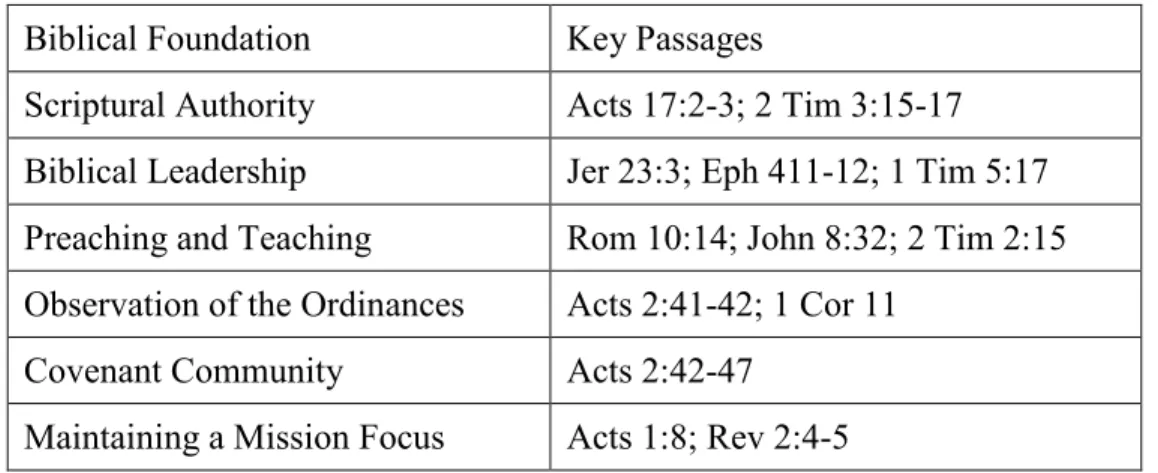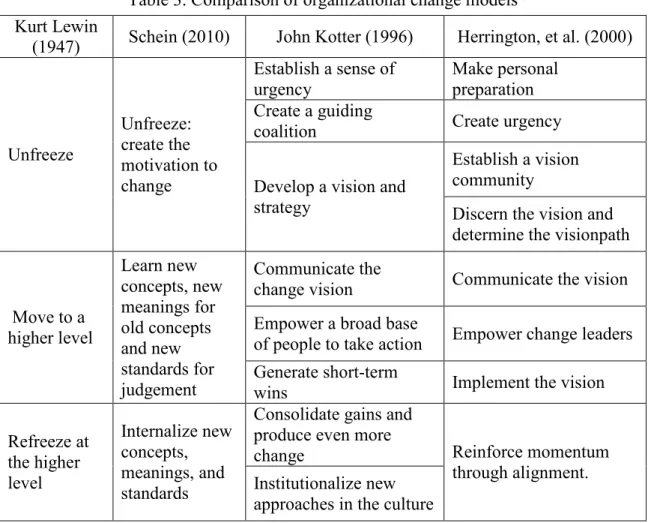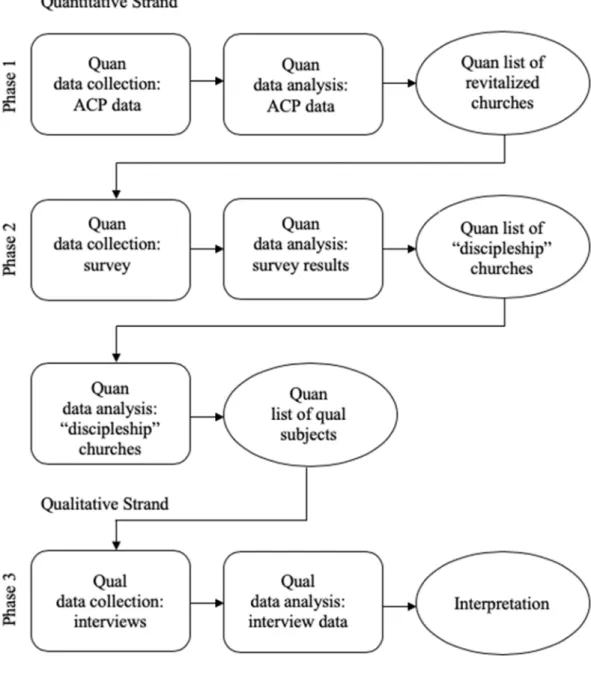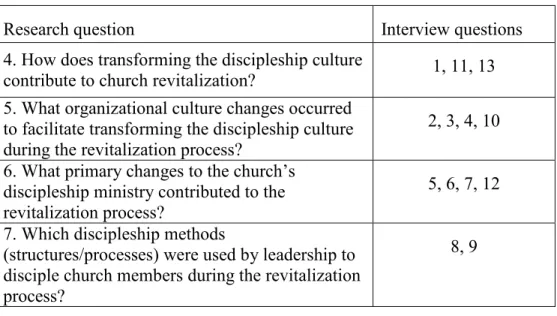The credit for this thesis goes to the culmination of many people who encouraged me along the way and helped me shape my thoughts. First, I want to give credit to my Lord, Jesus Christ, the author and perfecter of faith. Next, I would like to commend the pastors I spoke with and thank them for taking the time to share their insights and thoughts on discipleship and transforming discipleship culture in their churches.
Throughout the past three years we have challenged each other, prayed for each other, cried together and celebrated as life happened all around us. Michael Wilder, chair of my doctoral committee, who served as a guide and mentor for this project. My family has been a constant source of encouragement throughout the process and every step of the way.
INTRODUCTION
The ultimate goal of the overall study is to provide holistic, empirical data to support revitalization assumptions and efforts. This portion of the general study focuses on churches that have transformed their discipleship culture to assist in the revitalization of the church. Each category of literature has strengths and weaknesses in addressing the issue of church revitalization and discipleship; however, no scripture treats changing discipleship culture as a means of reviving it.
The culture of the church must shift from superficial discipleship to a deepening, intimate knowledge of Jesus (John 14:21). However, the focus of this portion of the study is to determine and prioritize key characteristics and practices of cultural change that are present within SBC churches that have experienced revival. This specific part of the study examines how transformation of the discipleship culture of the church results.
LITERATURE REVIEW
The result of this study showed that the "simpler" the church was, the more "alive" the church was. See also Pew Research Center, "The Religious Typology: A New Way to Categorize Americans by Religion,". Merkle, "The Pattern of Leadership in Acts and Paul's Letters to Churches," in Shepherding God's Flock: Biblical Leadership in the New Testament and Beyond, ed.
Using the story of the calling of the first deacons in Acts 6:1-6 as a model, Merkle writes, “The need to choose the Seven arose out of growth in the church. Mittelberg and Hybels add: “The mission of an organization is an extension of the mission of its leaders. Stetzer and Dodson add, "The process of motivating and mobilizing the people offers them the opportunity to discover and use their unique gifts and serve in the power of the Holy Ghost," Stetzer and Dodson, Comeback Churches, 133 .
John Piper notes, “The word disciple in the New Testament does not mean a second-stage Christian. 168 For example, in Acts at the Jerusalem Council, "the apostles and elders, with the whole.
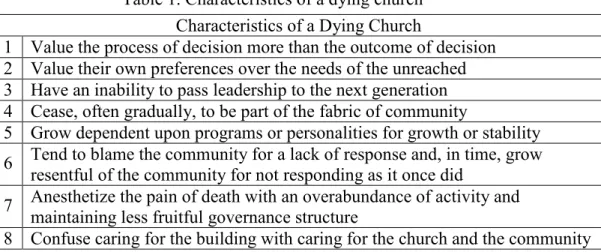
The purpose of phase 1 is to define the criteria of revitalization and identify the churches that meet that criterion. The data for this phase was drawn from the
The purpose of phase 1 is to define the criteria for revitalization and identify the churches that meet this criterion. The purpose of this phase was to explore how discipleship contributed to the revitalization of churches from phase 2.
The purpose of this phase was exploring how discipleship contributed to the revitalization of churches from phase 2. This qualitative strand employed a
Joseph Stephen Hudson, "A Competency Model for Church Revitalization in Southern Baptist Convention Churches: A Mixed Methods Study" (PhD diss., The Southern Baptist Theological Seminary, 2017), 8. Davis, skrywer van Revitalize: Biblical Keys to Helping Your Church Come Alive Again (Grand Rapids: Baker Books, 2017); Eric Geiger, Michael Kelley en Philip Nation, herlewingspastore en mede-outeurs van Transformational Discipleship: How People Really Grow, 2012; Joseph Stephen Hudson, skrywer van "A Competency Model for Church Revitalization in Southern Baptist Convention Churches: A Mixed Methods Study" (PhD diss., The Southern Baptist Theological Seminary, 2017). Lede van die navorsingspan het die inhoud en proses geoudit, saam met die projektoesighouer.
A Practical Guide to Church Revitalization (Nashville: B&H, 2015; Joseph Stephen Hudson, author of "A Competency Model for Church Revitalization in Southern Baptist Convention Churches: A Mixed Methods Study" (PhD diss., The Southern Baptist Theological Seminary, 2017 ), Kenneth Priest, Director of Convention Strategies for the Southern Baptists of Texas and co-author of Rubicons of Revitalization: Overcoming 8 Common Barriers to Church Renewal (Littleton, CO: Acoma, 2018). This particular portion of the study investigated after how the transformation of the discipleship culture of the church led to revival. The interview sessions with selected churches were recorded by means of Zoom technology through either telephone or video conferences. 3 The 12 interviews were.
This first step in the second definition analyzed the decline and growth rates of the church. B&H, 2012); and Joseph Stephen Hudson, author of "A Competency Model for Church Revitalization in Southern Baptist Churches: A Mixed Methods Study" (Ph.D. diss., The Southern Baptist Theological Seminary, 2017). Survey item 8 of the survey instrument asked respondents to rate the importance of each of the six areas identified in the revitalization process (see Table 10).
Survey item 12 sought to evaluate how well churches defined their discipleship process as part of the revitalization process. The Lord grasped their hearts with what was possible through their obedience and they were influencers in the church.”37 When asked who primarily led and/or initiated the change in discipleship culture, Pastor 1 reports: “The senior team led by me. In the words of Pastor 9: “The members were complacent, they just weren't willing to change anything or understand why they were dying.
Most pastors (7 of 12) mentioned the need to engage with the church's natural leaders and bought in early in the process. Narrowing of the sample churches was conducted according to the following criteria: (1) worship attendance in 2011 had decreased 10 percent or more compared to 2006 (5 years earlier) and (2) worship attendance in 2016 had grown 10 percent or more compared to 2011 levels ( 5 years before). These findings represent one of the largest studies on church revitalization in the last decade.
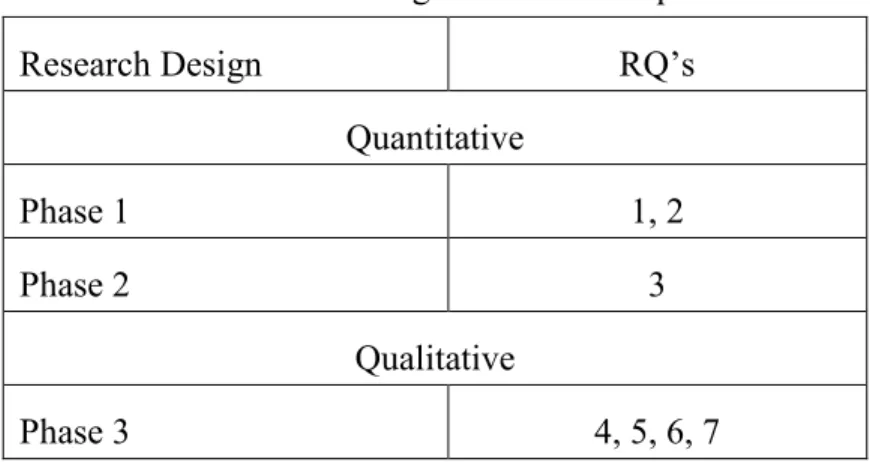
CONCLUSIONS
Within this research alone, the team discovered that of the 47,272 SBC churches that existed in churches had sufficient data to calculate their five-year trend in worship attendance. Further, transformation of discipleship culture as part of the revitalization process was noted by all interviewees as a positive influence on their revitalization efforts. Stetzer and Dodson add, "Discipleship is based on the need to learn the 'fundamental doctrines and habits of the Christian life'".
When asked to describe their small group model, only about half of the pastors during the qualitative interview mentioned their small group ministry by the name Small Groups. The reported intent of the class was to assess spiritual development and provide general education about the church prior to official acceptance by the church body and membership in the church. None of the pastors allowed a person to officially join the church body without going through some form of assimilation process.
The stated intent of these pastors was to provide a first touch opportunity for discipleship and to truly engage and encourage these new members to be an integral part of the church. The efforts of these pastors as they followed the leading of the Holy Spirit to transform the discipleship culture of their churches were the catalyst that initiated revitalization in the church. 14. With regard to the discipleship process, select the perspective that most closely matches the majority of active Church members at the beginning of the revitalization process.
Active members of the church regularly engaged in evangelistic conversations for the purpose of personal evangelism. 17. Briefly describe the type and frequency of evangelism training currently offered in your church. 18. Briefly describe the main changes in the mission ministry of the church, which you perceive to have contributed significantly to the revitalization process. 22. Indicate how important each of the following leadership practices has been in the revitalization process in the context of your ministry. Thank you for your willingness to participate as part of the research project on Church Revival conducted by the research team under the supervision of Dr.
Michael Wilder of Southern Baptist Theological Seminary for the purpose of identifying principles and practices used by pastoral leaders to effect church revitalization.
INTERVIEW QUESTIONS Demographic Information
You have identified the following (Inset of survey Q13 results) as programmatic elements that existed in the church's discipleship approach during the revival process. You have identified a more (Insert from survey Q14 results) individualistic or collective mindset than the majority of active church members at the beginning of the. In what ways have you found this mindset to be helpful or harmful to the revival process.
SAMPLE EMAIL SENT TO PASTORS Dear Pastor,
Discipleship culture – A discipleship culture is one in which the pastor teaches the congregation how to disciple each other in a biblical way to make more disciples and improve the health of the body. Kurt Lewin's Influence on Business Education." In The Lewin Legacy: Field Theory in Current Practice, edited by Eugene H. Church Revitalization and Evangelistic Emphasis: A Mixed Methods Study.” EdD Thesis, The Southern Baptist Theological Seminary, 2018.
Primal Leadership: The Hidden Driver of Great Performance.” In HBR's 10 Must Reads on Emotional Intelligence, 23-42. Writing interview protocols and conducting interviews: tips for students new to the field of qualitative research.” The Qualitative Report 17, no. The Roots of Endurance: Invincible Perseverance in the Lives of John Newton, Charles Simeon, and William Wilberforce.
It Takes a Church to Make a Disciple: An Integrative Model of Discipleship for the Local Church." Southwestern Journal of Theology 50, no. The church as a whole has a responsibility to turn the tide and move the collective church body toward health. While revitalization certainly is a topic of interest among evangelical church leaders, with ongoing efforts to create revitalization efforts such as the Mathena Center at SBTS or the Center for Church Revitalization at SWBTS, most research in the area is already dated or merely anecdotal.
This study used an explanatory sequential mixed-methods research design to identify successful church revivals and determine what influence transformation of the discipleship culture had on those successes. In the quantitative phase of this research, 716 (5.24 percent) SBC churches that experienced decline or plateau were found to have experienced revival. In the qualitative phase, twelve in-depth interviews were conducted to identify best practices among pastors who led their churches through change.
